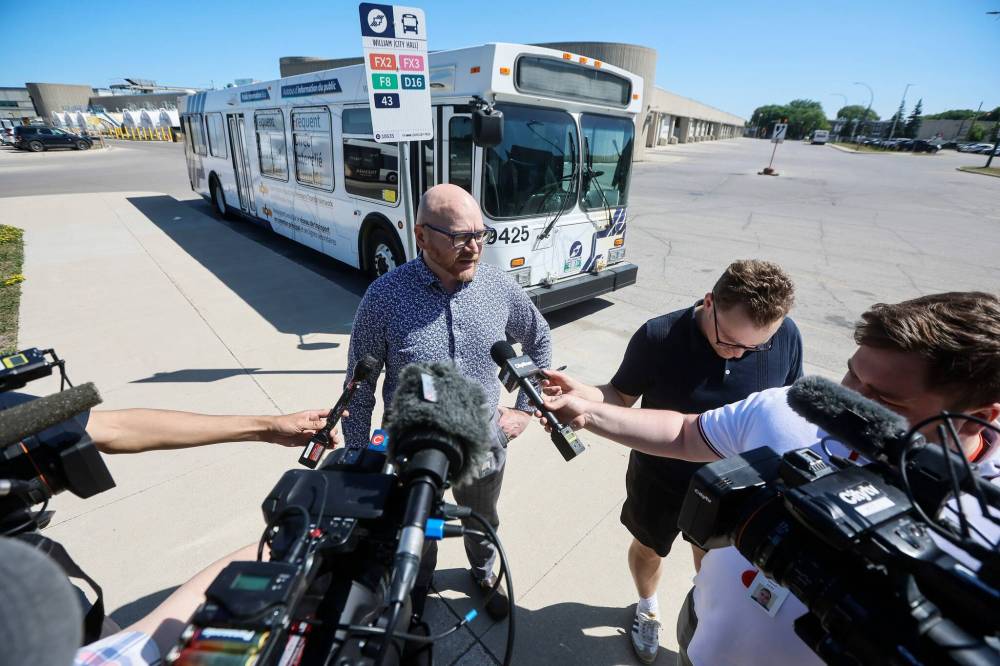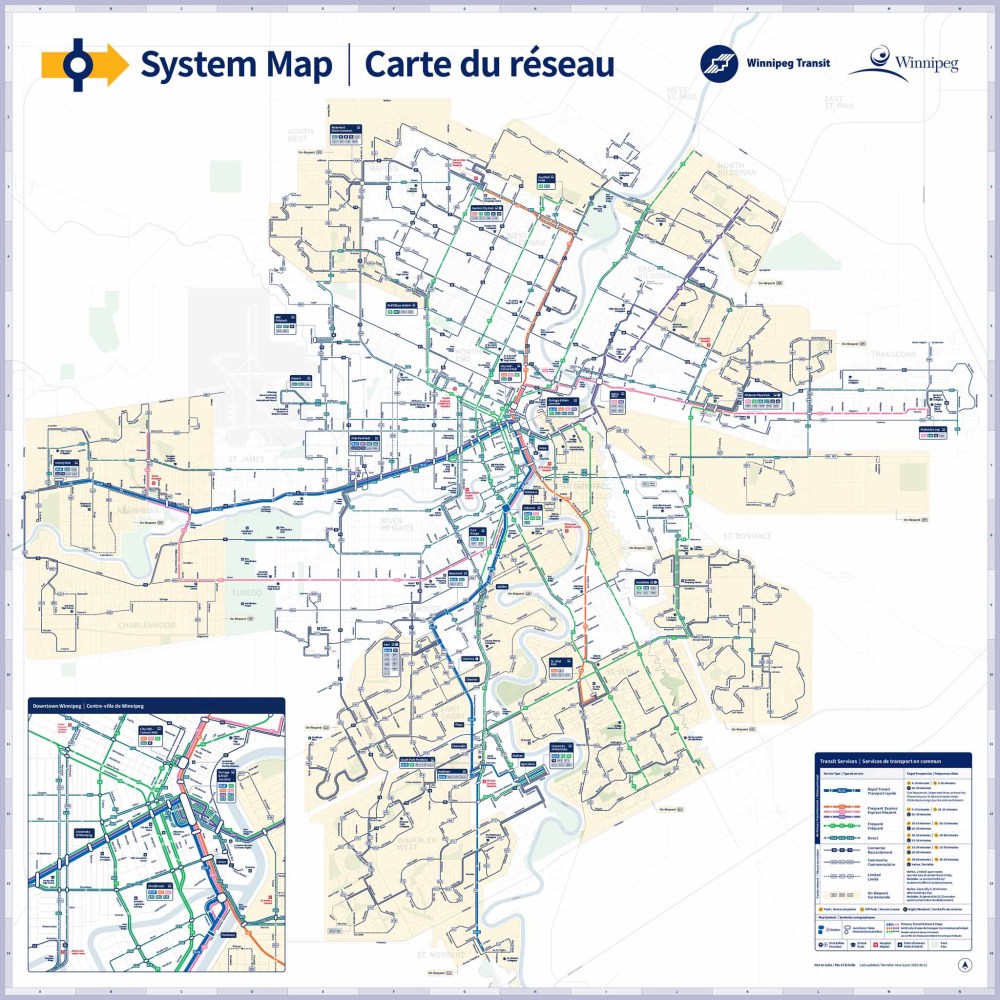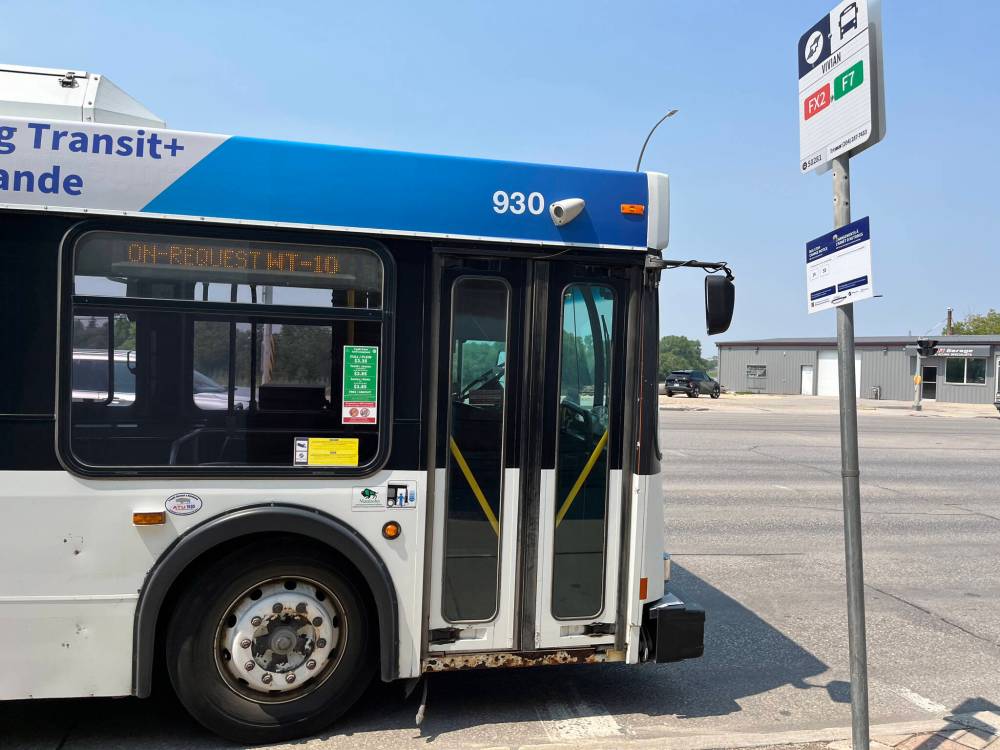Transit’s on-request expansion could pick up slack for riders Overhaul cut more than 1,000 bus stops but zones beefed up for on-demand trips
Read this article for free:
or
Already have an account? Log in here »
To continue reading, please subscribe:
Monthly Digital Subscription
$0 for the first 4 weeks*
- Enjoy unlimited reading on winnipegfreepress.com
- Read the E-Edition, our digital replica newspaper
- Access News Break, our award-winning app
- Play interactive puzzles
*No charge for 4 weeks then price increases to the regular rate of $19.00 plus GST every four weeks. Offer available to new and qualified returning subscribers only. Cancel any time.
Monthly Digital Subscription
$4.75/week*
- Enjoy unlimited reading on winnipegfreepress.com
- Read the E-Edition, our digital replica newspaper
- Access News Break, our award-winning app
- Play interactive puzzles
*Billed as $19 plus GST every four weeks. Cancel any time.
To continue reading, please subscribe:
Add Free Press access to your Brandon Sun subscription for only an additional
$1 for the first 4 weeks*
*Your next subscription payment will increase by $1.00 and you will be charged $16.99 plus GST for four weeks. After four weeks, your payment will increase to $23.99 plus GST every four weeks.
Read unlimited articles for free today:
or
Already have an account? Log in here »
Winnipeg’s new transit overhaul cut more than 1,000 bus stops across the city, but the expansion of the on-request service could fill the gap for some riders.
Winnipeg Transit’s on-request bus service — which allows riders to request a bus pickup online, via an app or by calling 311 — began as a pilot project in 2021 and became permanent in 2024 with four zones across Winnipeg.
When the city’s transit system network switched over June 29, it included an expansion to 12 zones around the city where riders can request a bus to take them from where they are to a bus stop on the primary network.
JOHN WOODS / FREE PRESS FILES Project lead and manager of service development with Winnipeg Transit, Bjorn Radstrom: “With on-request, we can have one bus cover a larger area.”
Community bus routes in residential areas, which bring riders to nearby services or primary routes, end earlier in the evening under the new transit network. The on-request service is available into the evening, with latest requests in some zones ending at 10:15 p.m.
The on-request zones were determined based on areas of the city with low ridership, said project lead Bjorn Radstrom.
“If we were to put the number of buses in a (low-ridership) area that are needed to carry the number of riders that we expect, you’d end up with a fixed route that has a bus coming every hour and a half or something like that. It’s not very useful to people, and it’s not very convenient, and hardly anybody would take it,” he said earlier this week. “But with on-request, we can have one bus cover a larger area.”
The Free Press put the service to the test using a smartphone Wednesday afternoon to request a ride from a residential area in St. Boniface to a primary stop that would otherwise be a 15-minute walk.
The trip required two apps — the base Winnipeg Transit app to plan the trip, and the Winnipeg Transit+ On-Request app to ask for a ride. Once the ride was requested, the on-request app suggested a pickup spot at the nearest intersection, less than a minute away.
It was a 15-minute wait, and the bus arrived on time. The drive to the bus stop was less than five minutes.
“It’s not a silver bullet that’s going to fix everything, it’s one way of approaching service.”–Bjorn Radstrom
The cost was the same as a regular bus ride and a transfer was provided. The bus driver said the on-request route was busy and he had spent the last four hours fulfilling rider requests using a GPS-enabled tablet he’d received as part of the overhaul.
While Winnipeg Transit’s website estimates on-request buses may take 10 to 20 minutes to arrive, requests made across the city Wednesday by the Free Press ranged from 30-minute waits to less than five minutes.
If an on-request zone sees enough action, it could inform future changes to bus routes, Radstrom said.

“It’s not a silver bullet that’s going to fix everything, it’s one way of approaching service,” he said. “If ridership grows in an area and we add resources, there is a tipping point where there’s just too many trips for one request to handle … One of the things we need to learn over the next couple of years is, what is that tipping point?”
The president of a transit advocacy group has mixed feelings about the situation.
Kyle Owens of Functional Transit Winnipeg noted some people do not have access to phones or internet and would be better served by a permanent stop.
“On-demand isn’t real transit. It’s not true service. It is a kind-of service. And with that, the danger is that Winnipeg Transit can increasingly say: ‘here is service,’ and it can point to a huge area on a map and say, ‘well, if people aren’t using it, it’s not a problem.’ When, if there was a reliable service, people would be much more likely to use (it),” he said.
“There’s real potential, and there’s also real potential frustration.”
On-request has the capacity to become a core aspect of Winnipeg Transit ridership’s day-to-day travels, Owens said, but as that ridership is expected to rise in the coming years, the public needs to be consistently informed.
MALAK ABAS / FREE PRESS A Winnipeg Transit on-request bus operates Wednesday within one of 12 designated zones across the city.
“Having that option is great if there is a real information campaign about how to use it, who qualifies and what the benefits are, and that has to be ongoing, that can’t be an email blast.”
Radstrom said the city is in the process of getting the word out.
“We’re still doing advertising about the new network, and we’re going to be doing more as September approaches, because that’s that’s going to be the real test for this whole thing, when everybody’s going back to school, back to work and all that.”
Tim Jichuk, a senior living in the Niakwa Park area, was shocked to learn his typical bus route downtown switched from eight minutes of walking to 23 minutes. The 73 year old worries for other seniors who have seen their walking times jump, especially when winter comes.
“I’m OK for walking, and it’s good for me to get out and walk, but I’m kind of wondering, how many people who are more challenged for walking, (is it) going to be tough for them?” he said.
He hopes the on-request service is able to fill the gap for some of them.
“I (didn’t) know about it, really, either, because to me, it’s always been something that a person who had mobility problems would use.”
Transit Plus continues to provide door-to-door paratransit service for registered riders with accessibility needs.
Transit’s on-request zones can be found at: wfp.to/request.
malak.abas@freepress.mb.ca

Malak Abas is a city reporter at the Free Press. Born and raised in Winnipeg’s North End, she led the campus paper at the University of Manitoba before joining the Free Press in 2020. Read more about Malak.
Every piece of reporting Malak produces is reviewed by an editing team before it is posted online or published in print — part of the Free Press‘s tradition, since 1872, of producing reliable independent journalism. Read more about Free Press’s history and mandate, and learn how our newsroom operates.
Our newsroom depends on a growing audience of readers to power our journalism. If you are not a paid reader, please consider becoming a subscriber.
Our newsroom depends on its audience of readers to power our journalism. Thank you for your support.






